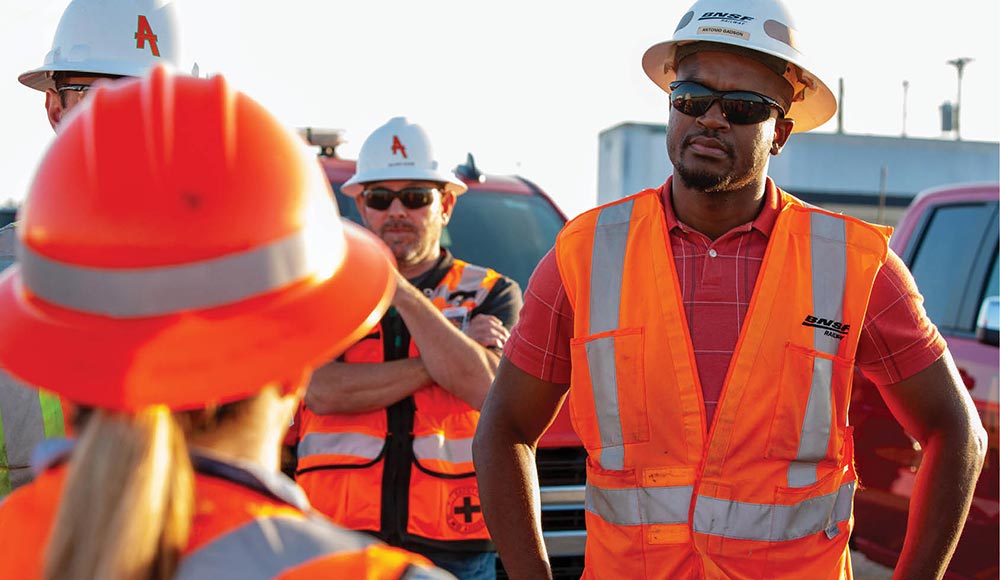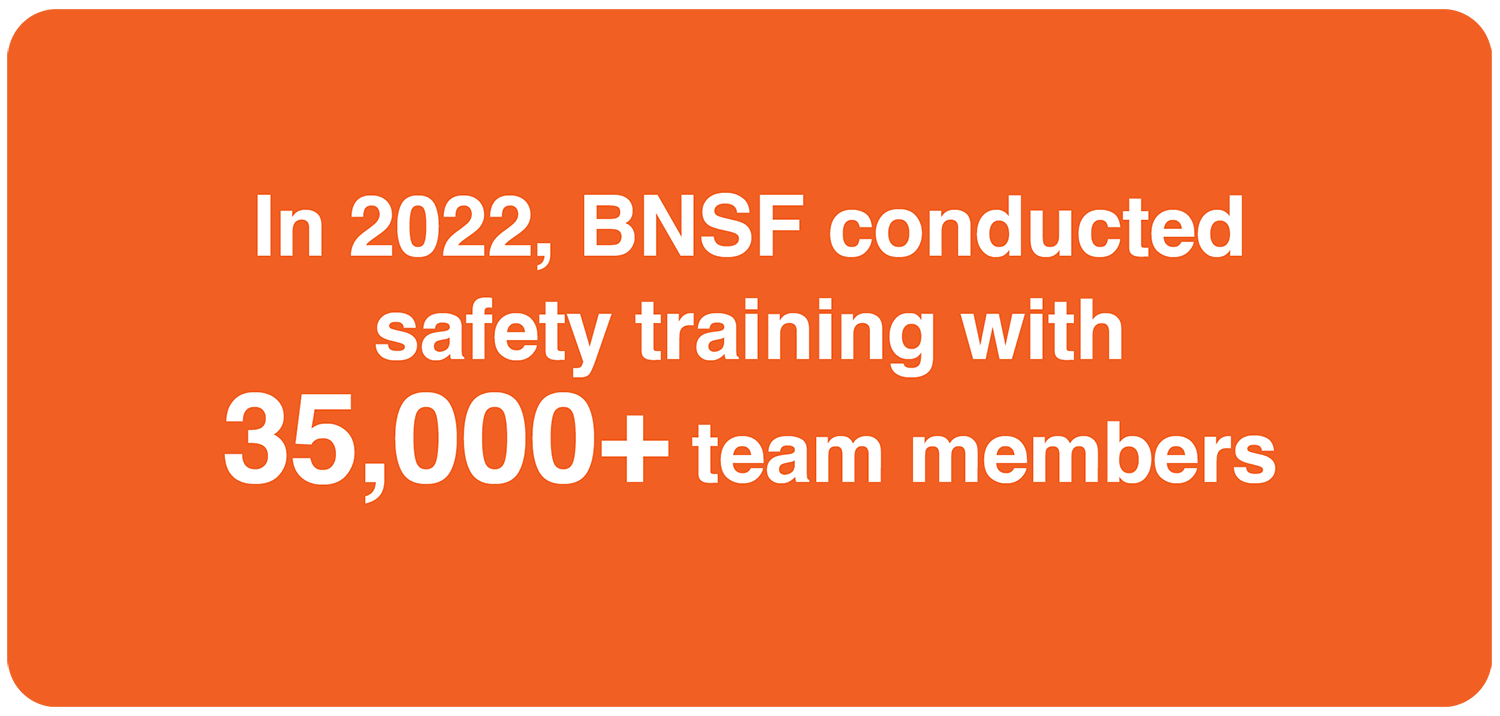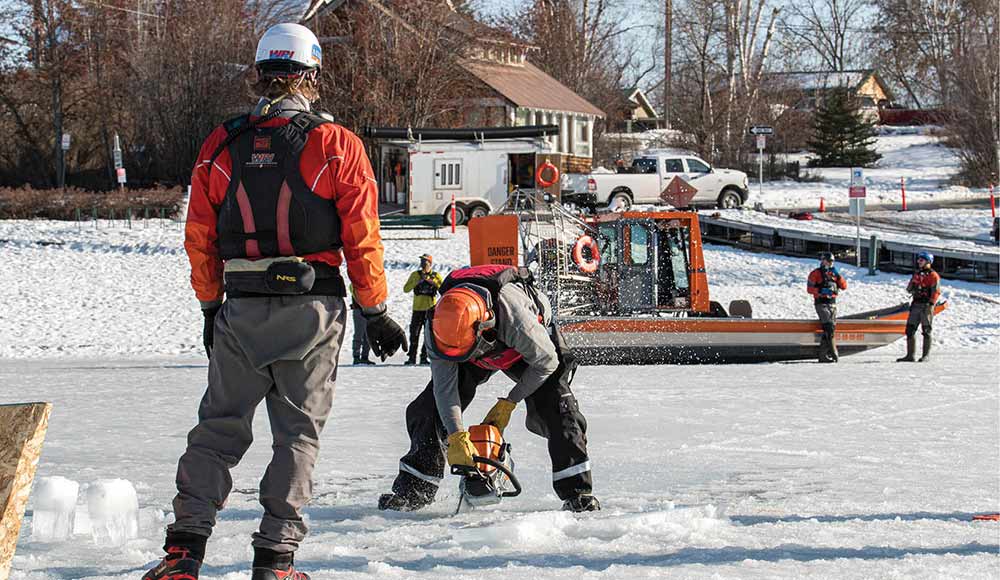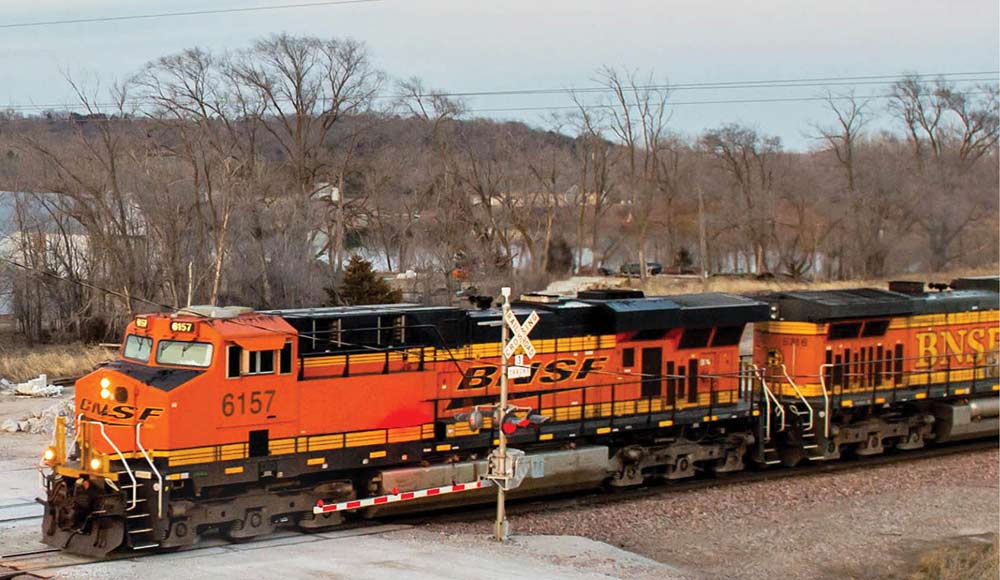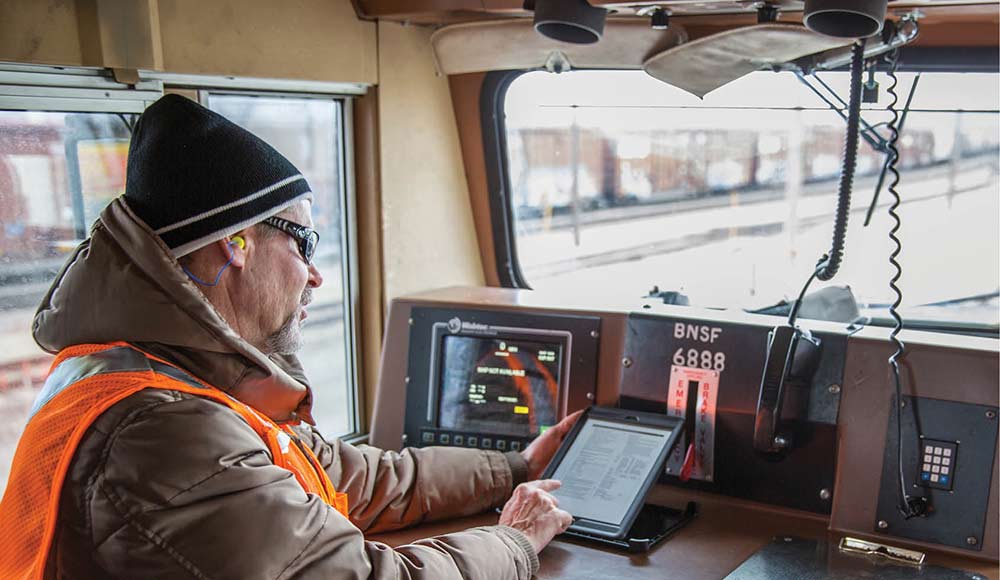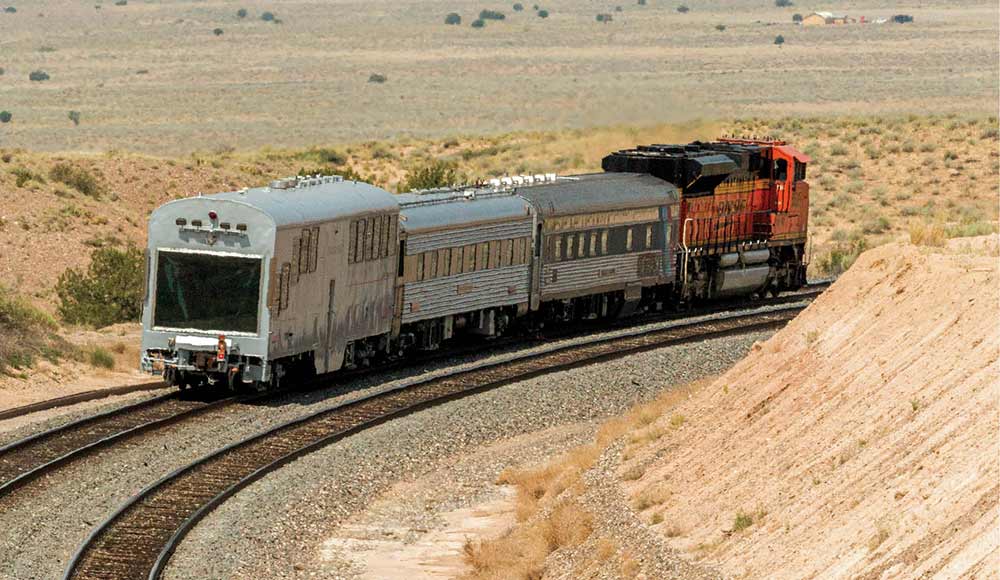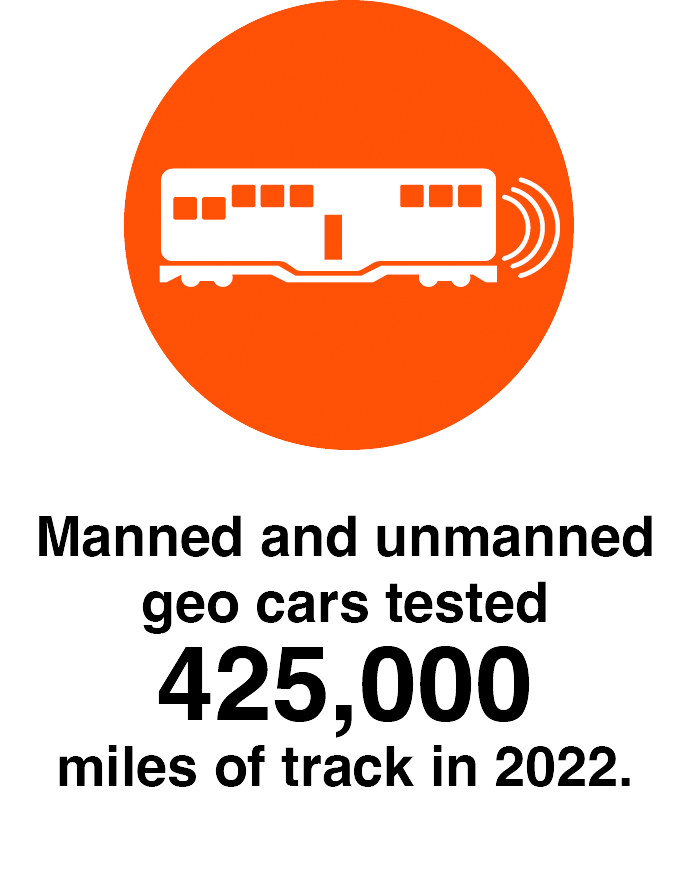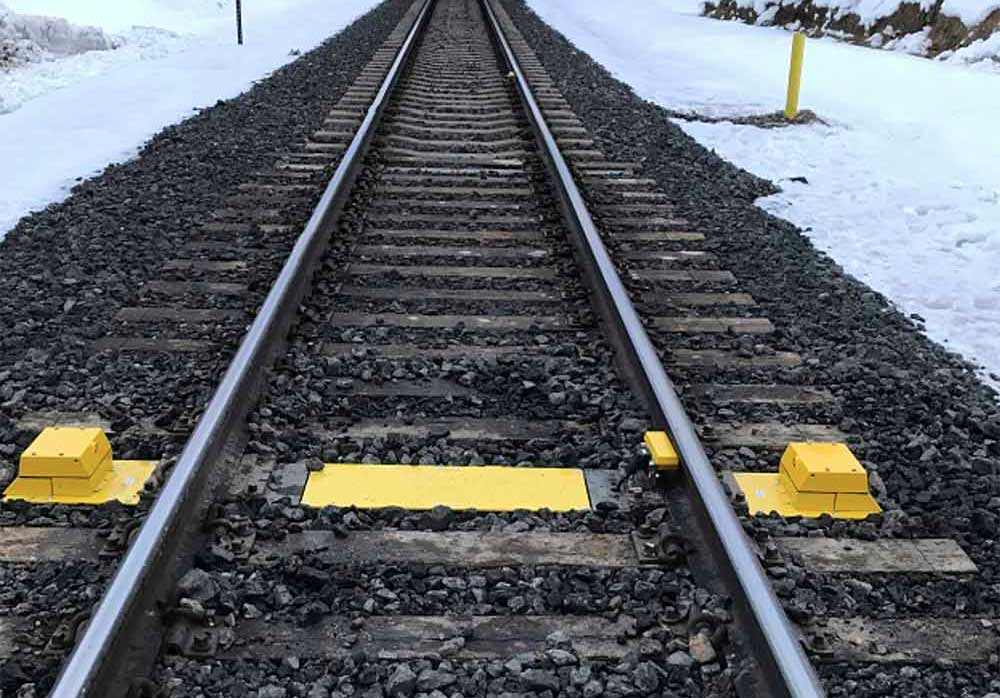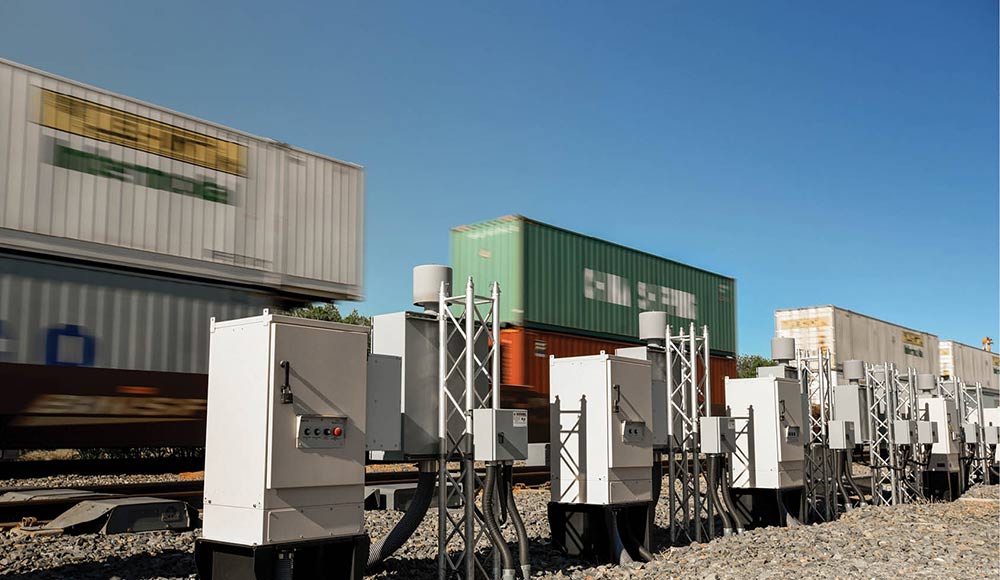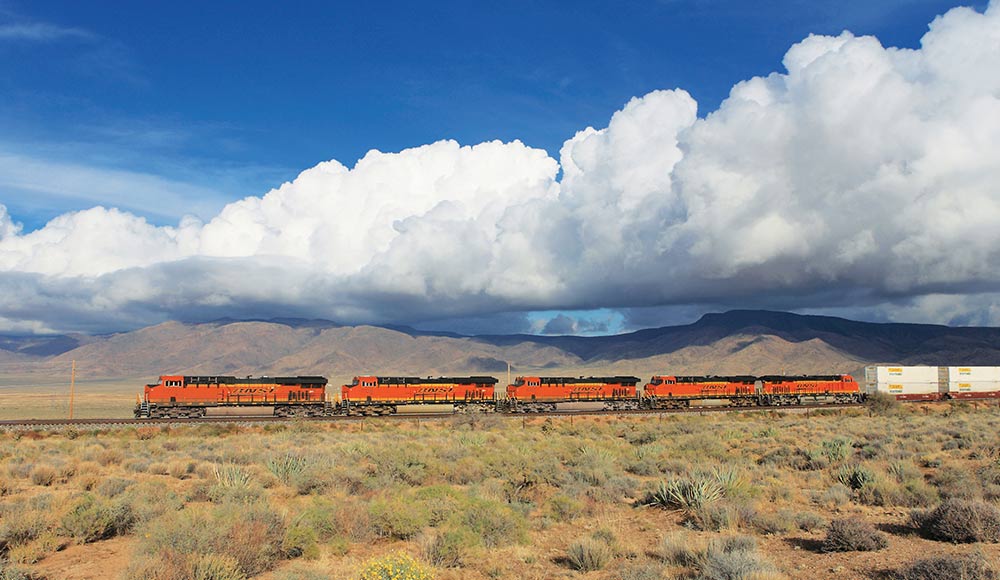Network Inspections
BNSF regularly inspects all aspects of our network, including our locomotives, track, rail and bridges, and we conduct additional weather-event inspections as conditions demand. Our team of trained inspectors deploys advanced equipment including instrument-equipped rail cars, bridge inspection vehicles and unmanned aerial vehicles (UAVs). BNSF inspections meet all federal requirements, and we are committed to timely maintenance, repair and replacement whenever issues or potential issues are detected.
Safety-enhancing technology includes:
- Machine Vision Systems (MVS)
- Autonomous track measurement systems
- Ultrasound for internal rail inspections
- Ground penetrating radar
- High-Definition cameras and accelerometers

